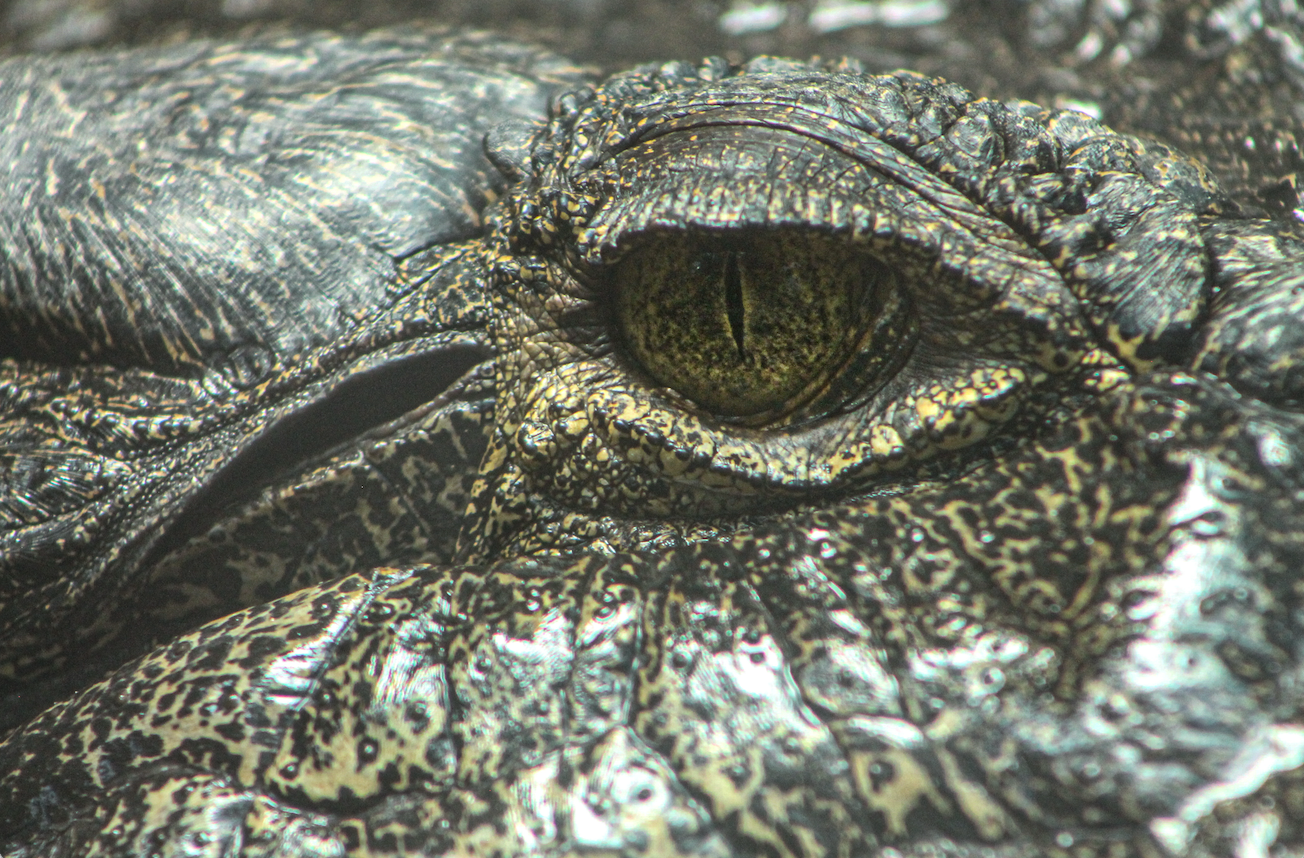
By Ruth Puddefoot
Crocodiles are masters of stealth, and their eyes play a central role in their predatory prowess.
Research in the Journal of Experimental Biology shows that crocodile vision is perfectly adapted for lurking just below the water’s surface. Their fovea, responsible for sharp vision, is shaped as a horizontal streak rather than a circle, aligning with the horizon when they adopt their “minimum exposure” ambush posture, with only eyes, cranial platform, ears, and nostrils above water. This lets them scan the shoreline with minimal movement, staying nearly invisible, though their underwater vision is limited and likely blurry.
Crocodiles’ eyes are remarkable in other ways as well. A transparent eyelid slides sideways across the eye when they dive or strike at prey, providing protection without obstructing vision. Conventional upper and lower eyelids can fully cover the eye when necessary, and the eyeballs themselves can retract into the sockets, likely as a safeguard during hunting or fights with other crocodiles.
At night, crocodilian eyes produce a distinctive red reflection when illuminated by a spotlight or torch. This “eyeshine” results from light reflecting off the retinal tapetum and can be seen from a considerable distance. Since most crocodilian hunting occurs at night, this feature helps researchers and predators alike detect these stealthy hunters.
The eyes of crocodiles are positioned very close together, only about 7 cm apart in a 5-metre-long animal, and face forward, giving them binocular vision. This allows them to judge distances accurately and orient objects, especially prey, with precision. Because the degree of overlap is relatively small, crocodiles often rotate their heads towards potential prey before initiating an approach, ensuring their strike is both calculated and deadly.
From their underwater vantage point to their night-time eyeshine, crocodile eyes are a masterclass in evolutionary adaptation. Every feature, from protective eyelids to precise binocular vision, enhances their ability to remain undetected, stalk with patience, and strike with lethal accuracy. If you visit the Proserpine River, there’s a good chance one will be watching you!
- Crocodile Eye. Photo credit: Ruth Puddefoot.
- Queensland Crocodile. Photo credit: Ruth Puddefoot